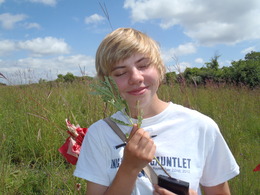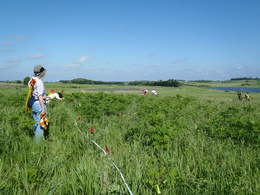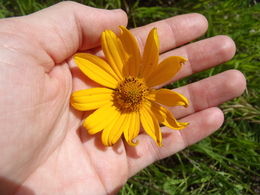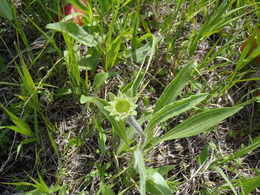Attached is a csv containing the coordinates for parasitic plantings in exPt01. ID is a unique ID to a Row x Position combination, Row is the row in exPt01 (starts at row 13 and increases by 5), Position is the position in exPt01 (starts at 861.85 and increases by 5), Treatment is what was placed there (seeds, Comandra, Pedicularis, or C + P which is Comandra and Pedicularis), siteOne is where the first plant planted came from and siteTwo is where Pedicularis came from if Comandra and Pedicularis were both planted.
|
||||
|
Today marked the second to the last day of mine and Reina’s stint in Kensington working with Echinacea. The past week we have been remeasuring photosynthesis with Helga our LI-COR 6400 and today we finally finished. Pam and Reina were the lucky ones who spent this last week outside working with Helga while I took wet weights of leaves and pressed them so we can obtain dry weights later. It has been a little strange this week remaining separated from the group, even at lunch time. Oh well, it was necessary so that we could finish! Today the rest of the group spent the morning crossing and finishing measuring the common garden, an arduous task that required quite a few days. After their lunch, they continued to work on seedling refinds, a important but often frustrating task. It will be sad having to say goodbye to the whole group tomorrow, but school is about to start, and so perhaps it really is a great time to be heading home. That’s it for today, and goodbye Team Echinacea! Happy Tuesday, everyone! Weather was as usual today, meaning erratic. In the morning, it rained really hard for about half an hour and then we were left with sunshine. In the afternoon, we started with sunshine and ended with rain! We still managed to get a lot done, though. Good job, team! In the morning, people did data entry while it rained and then individual projects and common garden work when it cleared up. We all met up for lunch and then spent the afternoon measuring more plants in the common garden. The leopard frogs seemed to love the weather and were everywhere today. So cute! In other news, Marie found a love for thistles and has proclaimed herself a “thistle whisperer.” We all went home early due to rain and a tornado warning (we’re all safe, thankfully). Lydia made a delicious dinner of black bean burgers and potatoes which was awesome! Sarah B Today was yet another very productive day. As we walked back to the cars to head back for lunch, Stuart stopped to point out Heliopsis helianthoides, also known as false sunflower. This plant has composite flower heads, as does Echinacea angustifolia, so it was good to learn about the similarities in structure between the two such as ray flowers and bracts. Our afternoon was spent using PDAs (Visor) to input data about plants in the inbreeding gardens. We worked in groups of 2 again, along with Per and Hattie who helped us (they were awesome!). The weather turned hot and humid at this point but root beer floats were waiting for us when we finished! That was my personal highlight of the day. In the common garden, we saw some E. angustifolia due to flower quite soon. Exciting! After that, the team headed back to the old town hall to eat dinner (pasta with shrimp and artichokes) and then watch a movie (Donnie Darko). All in all, a pretty good day! 🙂 Sarah Baker I’ve been working with the Stipa germination data we collected from the common garden over the summer for Stuart’s R class and, among other things, have come up with a little plot of the common garden. Filled-in blue circles are where we found Stipa alive, empty circles had no seedlings. A neat thing would be some kind of heat map for longest leaf or number of leaves, but I’ll try that later. |
||||
|
© 2025 The Echinacea Project - All Rights Reserved - Log in Powered by WordPress & Atahualpa |
||||




